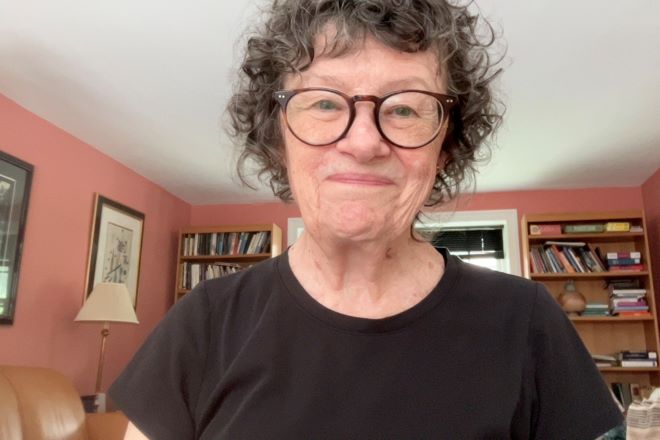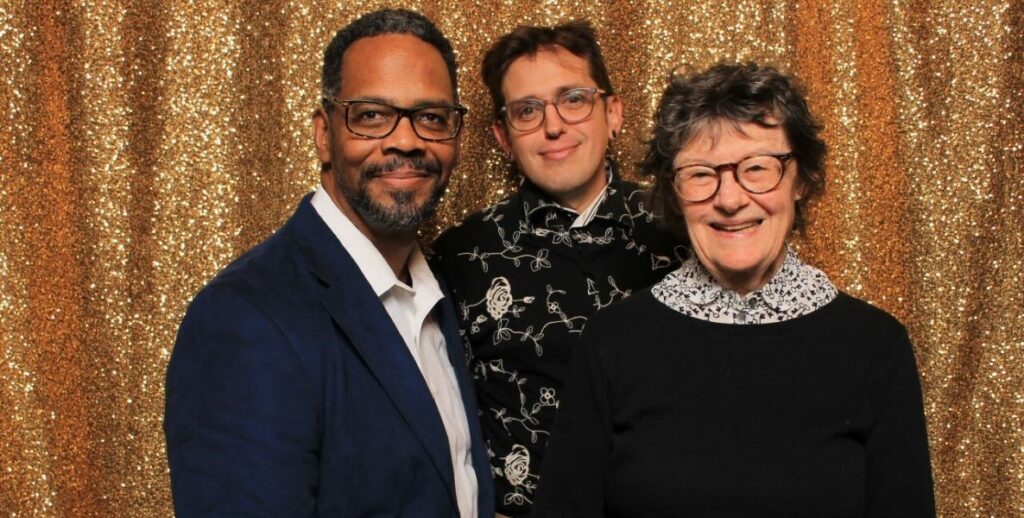When Roberta Fallon and Libby Rosof started a small blog in 2003 to talk about art, the two friends had no idea that more than 20 years later, Artblog would be a mainstay in Philadelphia’s coverage of arts and culture. After Rosof stepped down in 2014, Fallon stayed on as founding director. While her writing, interviews and critical inquiries are received by many, Fallon remains a largely private individual. “I love to give other people the spotlight,” she explains. “I’m in the background and I see myself as a producer of a platform.”
Like many arts and culture publications across the country, Artblog’s future is uncertain. “As much as Artblog seems to be an institution, it’s not. It’s held together by needle and thread that I hand-stitch every day,” Fallon says, “and everybody else is hand-stitching away as fast as we can to keep it stitched together.” This daunting task has persisted for over 20 years because of a simple and powerful belief: Art is connection. The future is a mystery, but the past is a beautiful tapestry.
How did you become a writer?
I went to the University of Wisconsin because I’m from Milwaukee, and that was the big school. When I was there, it was the Midwest equivalent of Berkeley. There was a lot of political organizing going on. There was the Vietnam War. The TAs went on strike my first year, so I was striking with the TAs because I agreed with them.
I wound up [majoring] in English, and when I graduated, I figured out pretty quickly that there were no jobs for English majors, so I took a couple of introductory journalism classes on how to write a news story. Sure enough, I got a job at a weekly paper in a little town outside of Madison.

interviewing. Courtesy of Artblog
That was back in 1974. I worked as a “society editor,” which meant they gave me a camera and told me to go to the Girl Scout cookie sales and take pictures and make sure I got the names right and do a little write-up. And I drove their truck. They had a great big truck, stick shift. That was my introduction to a writing job.
How did you and your Artblog co-founder Libby Rosoff first meet?
My husband and I had a couple of kids and he got a teaching job at Penn. I worked a couple years as a secretary to another professor. No writing to speak of. But I started taking classes at PAFA [Pennsylvania Academy of Fine Arts] and at Tyler [School of Art].
And then I met Libby. We had children in the same kindergarten class and met on the playground talking about children things. Very quickly I knew that she was a soulmate. She loved art and was a great talker and a great critical thinker. We’d have these wonderful discussions, and we were going to see art shows here and there. We thought, We can do better than this. And so, we challenged ourselves.
Libby at this point didn’t think she was an artist, and I was just sort of mucking around in plaster and in the wood shop. We started casting plaster in my basement together and making these sort of female monuments, monuments to domesticity.
We wanted to proselytize our mission, which was to deinstitutionalize art from the art world.
How did making artwork together lead to starting Artblog?
The two of us knew that we wanted a bigger audience than what we were getting in the galleries, where hundreds of people might’ve seen our work, if that. We wanted thousands of people to see what we were doing, and we wanted to proselytize our mission, which was to deinstitutionalize art from the art world. Artists speak to each other, art critics speak to each other, the art museum curators speak to each other. Where’s the public in all of this?
There’s this chasm, and we totally saw it, and coming out of 60s activism, you did something. So, we got out there, we made our little multiples in our basements and gave them away to people.
And it was all about getting into conversations with people about what art could be. We were giving throwaways away. Little wood clothespins that we had hand dyed very carefully with Rit dye. Very domestic, and stamped thoughts on them. Big thoughts like, What’s it worth? Who owns it? et cetera. We got into nice conversations, and we did that six times. I think it’s what we’re both the most proud of.
That was a direct precursor of Artblog, because it was talking; it was communicating ideas about art. Art belongs to you, and anybody can think about it. [Artblog] was just an outgrowth of our art practice.
Artblog auction fundraiser at Moore College of Art and Design, September, 2023. Courtesy of
Artblog
How did Artblog become more than just you and Libby?
We were two women blogging to begin with. Very quickly, people who were writers and artists came to us and said, “Can we write for you?” We didn’t have any money back then, so we started an ad program so we could get these wonderful people who wanted to write. Tim McFarlane was one of our first writers. He’s a great writer.
Finally we decided to step back from the writing part to give a platform for other people. Interviewing artists is not about us, it’s about the artist. So I love to do that.
Do you feel a lot of responsibility or scrutiny as the head of a local arts publication?
Initially I didn’t feel that responsibility. Twenty-one years ago when Libby and I started out, we were just peers with everybody we were talking to. We were nothing more than that. Twenty years later, we have an institutionalized blog. I’d like to think it’s a go-to place for people to read commentary and to find out about happenings and things of that nature.
We do arts advocacy. I feel that’s really important. I’ve spoken at City Council hearings a couple times to support the arts budget. The Office of Arts, Culture, and Creative Economy, and the Cultural Fund [OACCE] is pitifully funded and should have more. I’ve been straightforward about that, and we’ve done stuff on Artblog to support those budgets.
Now that Artblog is more established, I do feel more of a commitment to our mission and less like it’s experimental. When we started podcasting in 2010 — that’s a long time ago in podcast years — it was an experiment. Before we did audio, we did video. There’s a series of videos on our YouTube channel that’s called, Look! It’s Libby and Roberta. We did gallery visits with David Kessler, who was a videographer that approached us and said, “This would be fun. Let’s do it.” And we said, “We’re up for fun.”
What can people do to support art writing?
That is the Gordian knot, and I’m not sure I have the answer. It’s got to come through energy and advocacy. The path is not direct, but we have a new executive director of OACCE. I think that’s a really good place to start advocating for support for arts writing. I’ve been in the door in the Pew Fellowships. We love them, we hate them. They will not fund art writing. And yet they support artists and they support exhibitions. So do they not see that writing is part of the completion of art? If it doesn’t get written about by someone independent, not someone hired to write a book, but an independent organization, it’s not communicating the full picture.
Summit” at WHYY, May 3, 2024. (Left to Right) Eric Marsh, Sr. (WHYY Community &
Engagement Manager and N.I.C.E. Program Manager), Roberta Fallon, Lateef White (Uptown
Radio), Lauren Settles (We Talk Weekly), Sarah Glover (WHYY VP of News & Civic Dialogue)
If I were 20 years younger and had the energy to organize a group, I would go in and get meetings with as many foundation leaders as I could to talk to them about the absolute urgency of critical writing about the arts in Philadelphia. I’ve always thought that one thing that makes the art community here so vulnerable is that it’s under-known. Why is it so under-known? Because there’s no major publications publishing anything about it.
It’s vulnerable. Artblog could go away. The art community could evaporate very quickly. People will get depressed and move on. I have very dark thoughts that keep me up at night. It’s a worry.
What advice would you have for someone starting their own art publication?
Have a mission. There’s no right answer to what it should be, but you should think about it and write it down. Artblog’s mission was to fill the hole left by the dwindling coverage of the arts in Philly and to do it in the most accessible way possible.
Have an audience. Who you envision as your audience may not actually be your audience, but you should have an idea who you are pitching to.
And have a business plan. How are you going to support your project? It will have a better chance of success if you acknowledge you’re starting a business and think about funding. Volunteer organizations are fantastic, but in actuality, for arts publications, they fade away as energy wanes. They are basically unsustainable.
Logan Cryer is a curator based in Philadelphia with a penchant for local art histories. They currently serve as the Co-Curator of Icebox Project Space and they like to rewatch documentaries.
This story is part of a partnership between The Philadelphia Citizen and Forman Arts Initiative to highlight creatives in every neighborhood in Philadelphia. It will run on both The Citizen and FAI’s websites.

